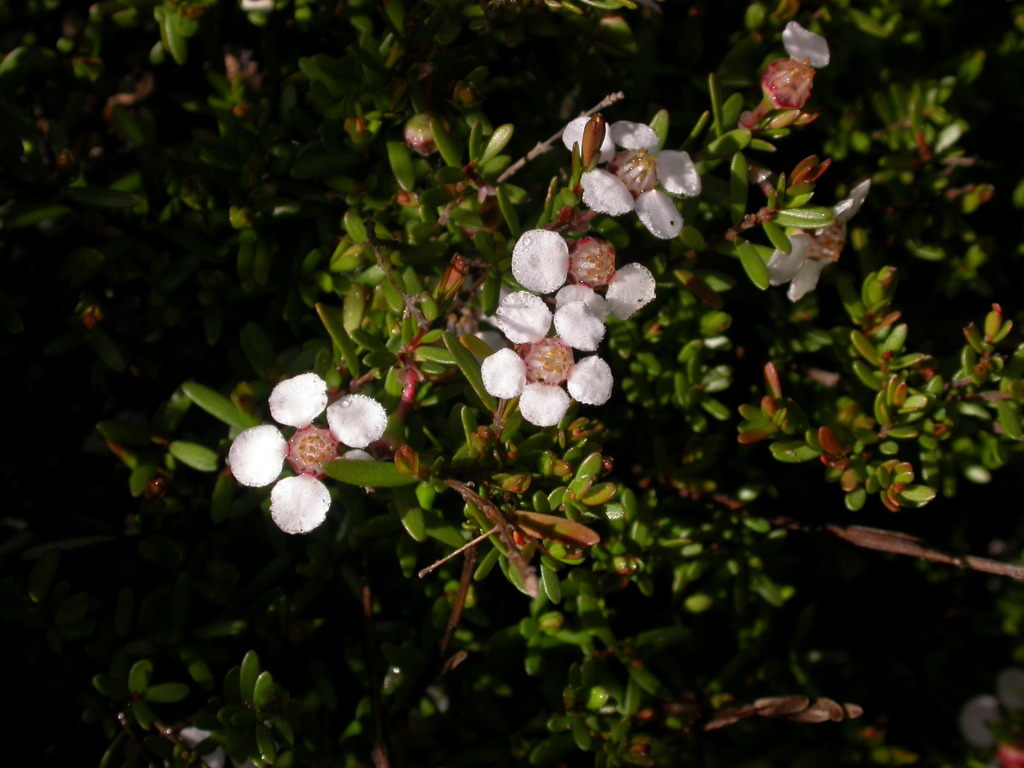Euryomyrtus ramosissima subsp. ramosissima
Shrub, prostrate to 60 cm high, sparsely branched to densely matted. Leaves linear-lanceolate or narrowly ovate, 2–14 mm long, leathery. Flowers solitary, rarely 2, 5–15 mm across, erect at anthesis, later deflexed; petals 2–4.5 mm wide; floral trichomes present near stamens; stamens rarely fewer than 10; ovules usually 5 per cell. Fruit 4–4.5 mm diam.; seeds 3–4 per cell. Flowers mostly Aug.–Jan.
GleP, VVP, VRiv, GipP, Gold, CVU, GGr, DunT, HSF, HNF, VAlp. SA, NSW, Tas. Widespread throughout much of inland Victoria, with isolated near-coastal occurrences at Frankston and Mt Richmond. Found mainly in heathland, woodland and dry sclerophyll forests on sandy or loamy soils.
At least 2 more or less distinctive variants occur in Victoria; one a low, suberect, shrub from dryish open-forest, the other a closely mat-forming plant from alpine and subalpine sites.
Jeanes, J.A. (1996). Myrtaceae. In: Walsh, N.G.; Entwisle, T.J., Flora of Victoria Vol. 3, Dicotyledons Winteraceae to Myrtaceae, pp. 942–1044. Inkata Press, Melbourne.
 Spinning
Spinning

